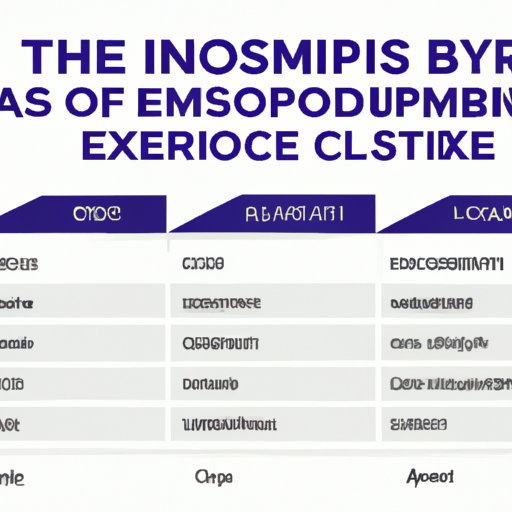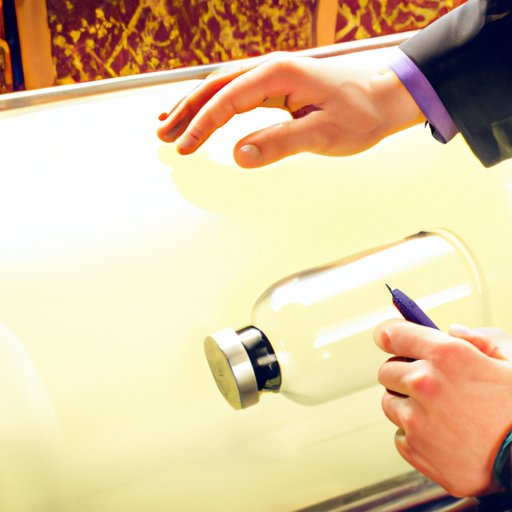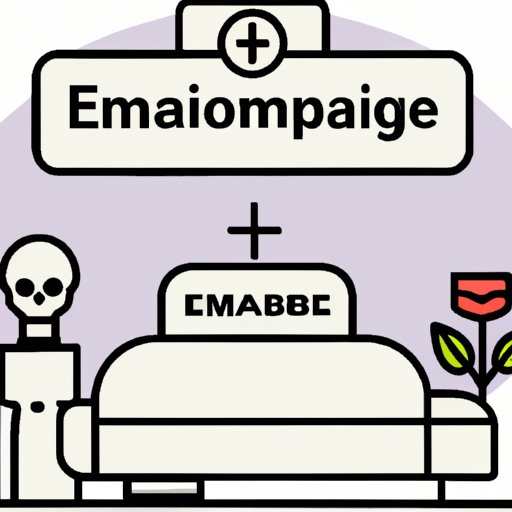Introduction
Embalming is a process used to preserve a deceased person’s body for a period of time until the funeral service can be held. It involves draining the dead person’s blood and replacing it with fluids and other agents that help to slow down the decomposition process. It is a common practice in many countries around the world, but its use varies greatly according to cultural and religious beliefs.
The average cost of embalming can vary greatly depending on where you live. This article will explore the average cost of embalming by state and investigate the various factors that can affect the price. Additionally, we’ll look at the history of embalming and examine the pros and cons of this procedure.

Comparing Average Embalming Costs by State
The average cost of embalming in the United States ranges from about $400 to $1000. However, this number can vary significantly depending on the state. In some states, embalming services are more expensive than others due to regional differences in laws, cost of living, and other factors.
For example, in California, the average cost of embalming is $849, while in New York, the average cost is $1,095. This is due to the fact that California has a lower cost of living than New York, which impacts the overall cost of embalming services.
When looking at regional differences, it is important to consider the laws of each state. For example, some states require that all bodies be embalmed before they can be transported across state lines. This means that if a person dies in one state and needs to be transported to another state for burial, they must first be embalmed in their home state before they can be sent to the other state. This can increase the cost of embalming significantly, as it requires additional preparation and paperwork.
In addition to regional differences in laws, the cost of living in different states can also impact the cost of embalming services. Generally speaking, states with higher costs of living tend to have higher embalming costs as well. This is due to the fact that funeral homes must charge more for their services in order to cover their overhead expenses.
Exploring the Variables that Impact Embalming Costs
In addition to regional differences, there are several other variables that can affect the cost of embalming. The most significant factor is the fees charged by the funeral home. Most funeral homes charge an additional fee for embalming services, which can range from a few hundred dollars to over a thousand dollars depending on the complexity of the work involved.
Another factor that can affect the cost of embalming is additional services or preparation. Depending on the wishes of the deceased, the funeral home may need to provide additional services such as dressing the body, preparing the casket, arranging a viewing, and so on. These services can add to the overall cost of embalming.
Finally, the cost of embalming can also be affected by the quality of the materials used. Funeral homes typically use high-quality materials that are designed to last longer and keep the body in better condition. These materials can cost more than cheaper alternatives, which can add to the overall cost of embalming.

Examining Embalming Costs from a Historical Perspective
The cost of embalming has changed significantly over the years. In the 19th century, embalming was a relatively rare and expensive procedure. However, as embalming methods improved and became more accessible, the cost of embalming began to decrease. Today, embalming is much more affordable, with the average cost ranging from $400-$1000.
The cost of embalming is affected by several factors, including technological advances, changes in laws, and the cost of living in different areas. As technology improves, embalming techniques become more efficient, which reduces the cost of the procedure. Additionally, changes in laws can affect the cost of embalming, as certain states may require additional preparations or paperwork. Finally, the cost of living in different regions can also affect embalming costs, as funeral homes must charge more in order to cover their overhead expenses.

Investigating the Pros and Cons of Embalming
While embalming has its benefits, there are also some drawbacks to consider. One of the main benefits of embalming is that it helps to preserve the body for a longer period of time. This allows family members and friends to have more time to say goodbye to their loved one and to arrange a meaningful funeral service.
However, embalming also has some drawbacks. For one, it is an invasive procedure that can be emotionally difficult for family members to witness. Additionally, embalming chemicals can be toxic and can cause health risks for those who come into contact with them. Finally, embalming can be expensive, which can be a burden for families who may already be dealing with other financial issues.
Exploring the Benefits of Pre-planning for Embalming Costs
One way to reduce the cost of embalming is to pre-plan for the expense. There are several options available for pre-planning, including pre-paid funeral plans, insurance policies, and other financial options. Pre-paid funeral plans allow individuals to pay for their funeral expenses in advance, while insurance policies can help to cover the cost of embalming in the event of death.
Additionally, individuals can also explore other financial options, such as setting up a trust fund or taking out a loan. These options can help to alleviate the financial burden associated with embalming and other funeral expenses.
Conclusion
Embalming is a common practice used to preserve a deceased person’s body for a period of time. The average cost of embalming can vary greatly depending on where you live and the laws of the state. Additionally, there are several other variables that can affect the cost of embalming, such as the fees charged by the funeral home and the quality of materials used.
The cost of embalming has changed significantly over the years, and it is likely to continue to change in the future. Additionally, there are both benefits and drawbacks to embalming that should be considered. Finally, pre-planning for embalming costs can help to reduce the financial burden associated with the procedure.
(Note: Is this article not meeting your expectations? Do you have knowledge or insights to share? Unlock new opportunities and expand your reach by joining our authors team. Click Registration to join us and share your expertise with our readers.)
